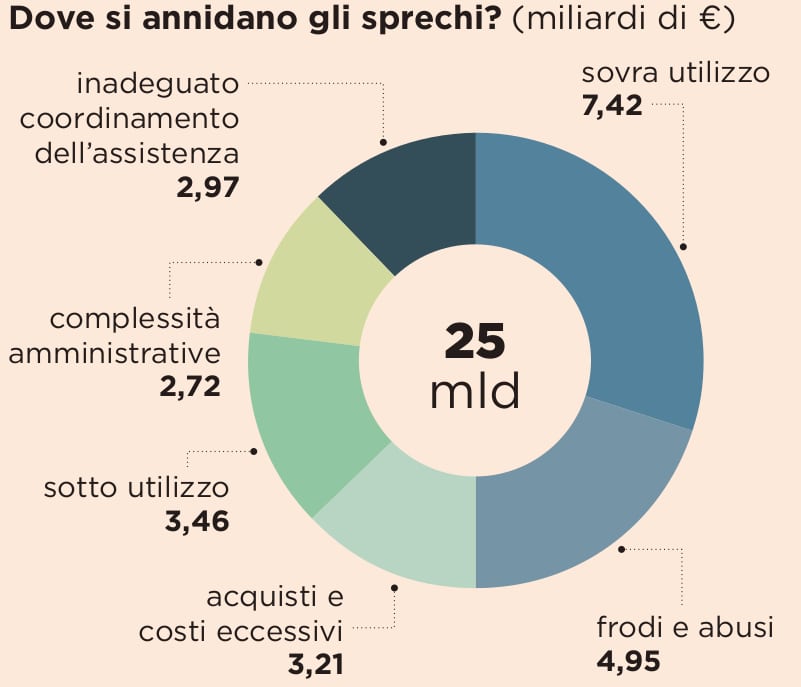Waste in healthcare: from beds that don't fit in elevators to anesthesiologists who work as nurses
Infermieristicamente – 14/10/2019 by Elsa Frogioni
Social media often offer real-time information, or food for thought. Like the Facebook post by Lorenzo Tosi is a nurse colleague at the 118 Central Station Emilia Ovest and emergency medical services.
The theme is that of waste in healthcare, due to “silent management errors”often attributable to inappropriate decisions of some managers, who are almost never called to account for them, or to the lack of political will to implement organizational changes with the appropriate use of professionals. Now the only observable change is that Pandora's box has cracked and this submerged "malpractice" is being revealed.
Lorenzo Tosi, while attending a health education event had the opportunity to hear the following discussion.
Below is the post:
Ad un congresso nel mondo Sanitario…

Person 1: in my hospital the beds for the orthopedic department bought and never used because they don't go in the lift!! Moderator: Well, other examples?
Person 2: the maternity ward was closed at my place, despite the fact that the premises had recently been renovated and painted. The equipment provided (including a water birth tub and some incubators) remained unused!
Moderator: Interesting! Others?
Person 3: we often repeat pre-hospitalization tests: for example, patients awaiting surgery are often hospitalized to carry out all the pre-operative visits and tests, only to be sent home because the date of the surgery is postponed and so, after a few months, the citizen must repeat all the tests.
Moderator: I understand. Do you see? Lots of waste of resources. We misuse what we have. But I see another hand raised. She? Tell me what is the wasted resource in your hospital?
Person 4: si be da me l’emergenza territoriale è svolta da anestesisti che intervengono, chiamati dall’Infermiere che dovrebbe avere i farmaci ma non glie li forniscono, per un glucosio al 33% in un paziente con 40 mg/dL di glicemia. Mentre i volontari intervengono da soli su uno shock anafilattico, perché i due unici sanitari sono entrambi sullo stesso servizio. Lo spreco è la vita delle persone… è usare gli anestesisti a fare gli Infermieri e i volontari a fare gli anestesisti.
Moderator: ….sono senza parole…
Ed:
In 2017, the National Health Service wasted over 21 billion euros, almost one euro out of five. The Gimbe Foundation calculated it in its own sustainability report. They come 
From January to June 2019 the cases of corruption reported in the press were 387 all over Italy and the regions that record the highest number of cases are Lombardy, Sicily and Campania. The three sectors most critical: Public Administration, health and politics. What is most striking is the fact that these three sectors - so crucial in the lives of all of us - alone represent almost 2/3 of the cases reported by the media. And even 1 out of 3 cases is related to public procurement. This demonstrates once again how high the risk of corruption is in such a sensitive sector as public works (Transparency International Italy)
Corruption in healthcare is estimated in our country at €23.6 billion.
Prof. Paolo Esposito of the University of Eastern Piedmont compared the two "anti-corruption laws", i.e. the 231/2001 and the 190/2012. The resulting impression is that the anti-corruption law and the delegated decrees have not clearly traced application methods in favor of the operators, nor affected in terms of repression or prevention of corruption phenomena, above all in lack of a widespread managerial culture and training. Furthermore, the legislation has not affected the choice of managers capable of managing healthcare in the interests of the public system alone.
In tutto questo devastante marasma, l’ANAC che fa? Elabora dei cosiddetti codici anticorruzione che impongono astruse forme burocratiche e formali che non incidono per niente sul fenomeno, ma bloccano lo svolgimento dell’attività lavorativa. Chi vuole corrompere, o essere corrotto, sicuramente sarà più ligio nell’osservare i codici, i più onesti, sfiduciati, sono destinati ad abbandonare il campo, irrimediabilmente inquinato da corruttori e corrotti che modificano il mercato secondo i loro interessi.
Emblematico il caso degli Informatori Scientifici, colpevolizzati per ignoranza. In nessuno dei 387 casi di corruzione in Italia nei primi sei mesi del 2019 ha visto coinvolti ISF, ma in due o tre casi sono stati identificati come ISF: Capi Area, Dirigenti aziendali, rappresentanti venditori. Secondo la legge nessuno di questi ha a che fare con gli ISF. Ma è facile colpire e dare in pasto alla stampa gli ISF, che qualcuno indica come portatori di interessi, distraendo e così lasciare indisturbati i veri portatori d’interessi.
